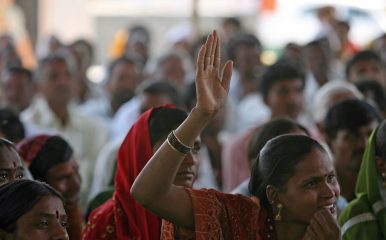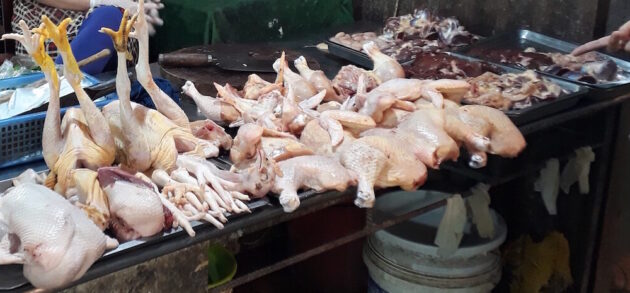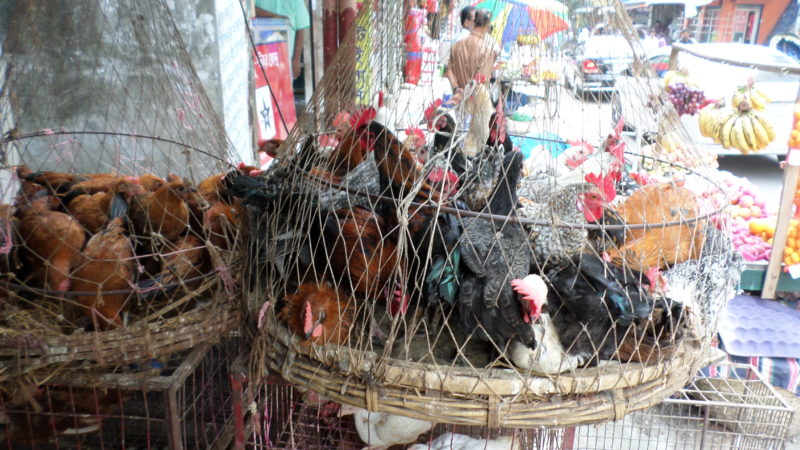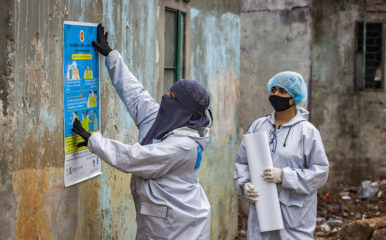
Why we need to speak to the traders in the Wuhan wet market, not shut them down
Published on 02/02/2021

Giel Ton
This week scientists in the World Health Organization (WHO) mission to Wuhan to investigate the source of the Covid-19 virus visited the Huanan Seafood Wholesale Market – the wet market once thought to be the place where the Sars-Cov-2 virus first jumped from a bat or a pangolin to people.
Given the illnesses and deaths the Sars-Cov-2 virus has wrought, as well as the resulting worldwide social impacts and financial losses, it is unsurprising that calls for bans on wet markets have been widespread.
Disease spillover
The close mixing of a wide variety of animals and people in often unhygienic conditions presents near-perfect opportunities for viruses to mingle, evolve and jump the species barrier. Such ‘zoonotic spillover’ is not so rare and may even be of a little consequence. But it may represent the first instance of disease outbreak of a known viral threat such as avian influenza (bird flu). Or a new danger, such as has happened with the Sars-Cov-2 virus.
Wet markets are commonplace in Asia and Africa. Some people, find them exciting and convenient; others find them disgusting and crowded. But they are often the best, if not the only, way to get nutritious and affordable food – and they certainly provide sensory guarantees of ‘freshness’ as well, in some places, of correct ritual slaughter.
They sell seafood and meat, including sometimes live as well as dead animals, and occasionally wildlife too. Local taste is an important component of the demand they serve, and they generate incomes for numerous, often poor and marginalised, people.
Live animal trade
Shutting down live animal markets may not shut down the live animal trade. Evidence shows that it can just displace it, pushing people who are too poor to give up on it to take even more risks – placing both themselves and, as we know, the wider community, in danger, with disease risk actually becoming greater.
An approach, which has been successful in Hong Kong, is to keep markets selling live animal (in this case, birds) open while regulating the management of animals offered for sale and increasing hygiene standards. But while access to hand washing, toilet facilities and water supplies are an important part of disease control, they are not the most important part.

In Bangladesh, UN-funded programmes aimed at upgrading hygiene in live bird markets – a ubiquitous part of the Bangladesh food scene – made little difference to the presence of avian influenza viruses in the chickens bought and sold there. Why? One reason was retailers and butchers were reluctant to change their practices, believing their customers could view this as indicating a lack of confidence in the health of their own chickens. That is clearly not great for sales.
So while technical interventions such as improved biosecurity have their place, it is essential to address social and economic factors constraining the behaviour of people involved in animal production and trade, from farms to markets. For example, tight and oppressive credit terms may push farmers into risk taking, forcing them to prioritise short-term over long-term goals which in turn may be associated with high disease risks further down the supply chains.
Understanding communities
Unless people’s motivations and constraints for actions (or inactions, as with some apparently biosecurity-averse butchers and farmer) are understood, then top-down disease control measures are set to fail. The key to minimising disease risk in wet markets lies in interventions informed by detailed knowledge of practices and what determines these at ground level – however wet and slippery that ground may be.
Doing that is not easy. It involves speaking to and learning from people about their daily lives and it will take longer to experiment to find the right approach in any particular context. Ultimately though, solutions based upon people’s local expertise, knowledge and livelihood goals are the only sustainable options.
Experience shows that top-down regulations are often flouted, and outright bans can see risky activity driven underground where disease control is not just difficult but near impossible. It is essential that those making the decisions now affecting wet markets get this right; the risks consequent upon getting it wrong can prove catastrophic.
Finding the source of the coronavirus pandemic is an important part of the scientific community’s pandemic response. But as Dr Peter Dascak, a member of the UN mission to Wuhan, has previously pointed out, it misses the main point. Any discovery of the UN team won’t stop the next spillover unless something more fundamental changes.
Working with communities is essential in efforts to make the world safer not just from viral spillover in wet markets but also from other disease-causing microbes in situations where zoonotic transmission is a high-risk, including intensive poultry farming and land clearance.
And let’s not forget that these microbes too often now bring with them the further spread of antimicrobial resistance, one of the WHO’s top 10 threats to global public health. Antimicrobial resistance renders common antibiotics useless and puts people at risk of death from disease that previously was easily treatable.
But that’s a whole other story …


